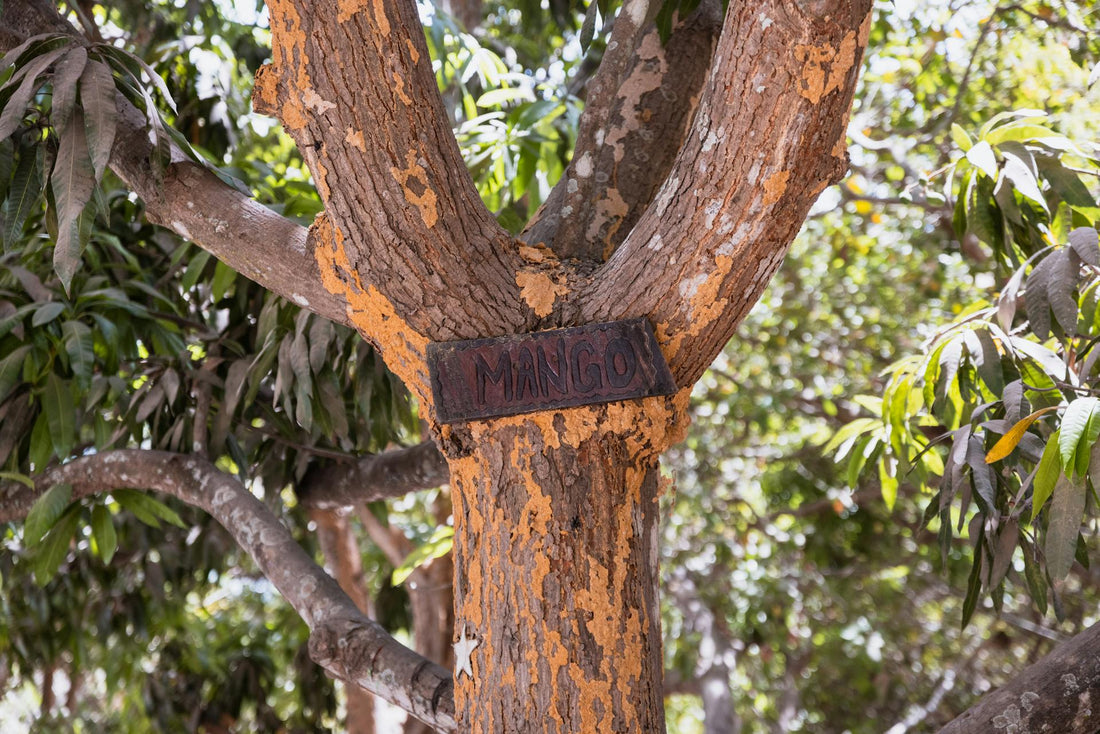
Mango Wood: The Ultimate Guide.
To all intents and purposes, Mango Wood is the new oak. A hard wood, steeped in rich history, it's characteristic grain pattern and sustainable qualities endear it to designers worldwide.
At Maple Kitchen Goods, we are passionate about sustainability. When you buy from us, you ensure a fair deal for you, our artisans, and the environment. Our Mango Wood Collection features bespoke, handcrafted pieces made from ethically sourced wood.
But what makes Mango Wood special, and is it right for your kitchen?
What is Mango Wood?

The Mangifera indica tree is best known for those sweet, juicy mango fruits it grows in summertime. Once that plant is too old for fruit bearing, it’s harvested for its wood.
While Mango Wood is new to many of us, it’s been in human use for thousands of years. In India, Mango wood is the material of choice for many, due to its quick growth time, and versatility. Artisans use it to make furniture, and everyday objects (including some musical instruments!)
It is naturally water-resistant, which has made it a staple material in many households in India, Thailand, some African countries, and even parts of South America.
So, why choose Mango Wood?
Though it’s not as hard as apple or oak, Mango wood is classified as a hard wood, so it can take lot of wear and tear. Some designers compare it to teak, due to its pleasing grain appearance and smooth finish.
Sustainability:

Mango Wood has a very short maturation period; it's ready to harvest much sooner than other woods. Better still, it’s essentially a by-product of Mango fruit. By choosing this workable and inexpensive wood, you’re saving it from going to waste.
Natural Beauty:

Each Mango tree varies in grain and color, so each piece is unique. Its smooth finish lends it a deliciously tactile quality and brings an elegant touch to kitchen items like cutting boards, bowls, and utensils.
Caring for Your Mango Wood.
Mango Wood is strictly hand-wash only! Always wash mango wood kitchenware by hand using mild soap and some warm water. Rather than leaving it to soak, wash the soap off and dry your Mango Wood Bowl with a towel to prevent it soaking up moisture and odors. To keep odors away, just rub it with half a lemon or a paste made from baking soda and water, then rinse and dry with a clean towel.
Don’t Scrub too Hard! Steer clear of harsh chemicals or abrasive cleaning tools on mango wood, as these can strip the wood of its natural oils and damage the surface.
Oiling:Once a month, treat your mango wood with oil to enhance its natural color and grain.
Any food-safe mineral oil (such as coconut oil) will do. If you’re using your Mango bowl set as decoration only, invest in a specialized wood conditioner to deliver your mango wood the nutrients it needs.
Grab any soft, clean cloth to stipple a thin layer of oil over the wood’s surface, and leave to soak up the oil overnight. Next morning, wipe off any excess oil with a clean cloth. Use sandpaper to buff out and light scratches. Afterwards, apply a fresh coat of oil to seal moisture in.
Climate Control:
There’s a fine balance when it comes to keeping mango wood. Excess heat can dehydrate the wood, leading to cracks, so keep away from stove tops and ovens. While mango wood is water resistant, excess humidity can cause it to lose its shape, or grow mould. Store your items in a cool, dry place away from direct sunlight.
Now you have read our guide, check out our Mango Wood Collection here for 10% off your first order.
Plus, follow us on Pinterest, @maplekitchengoods, for more vintage decor & kitchenware inspiration!
Sources:
Mango Wood - Characteristics, Uses and Benefits (woodassistant.com)

